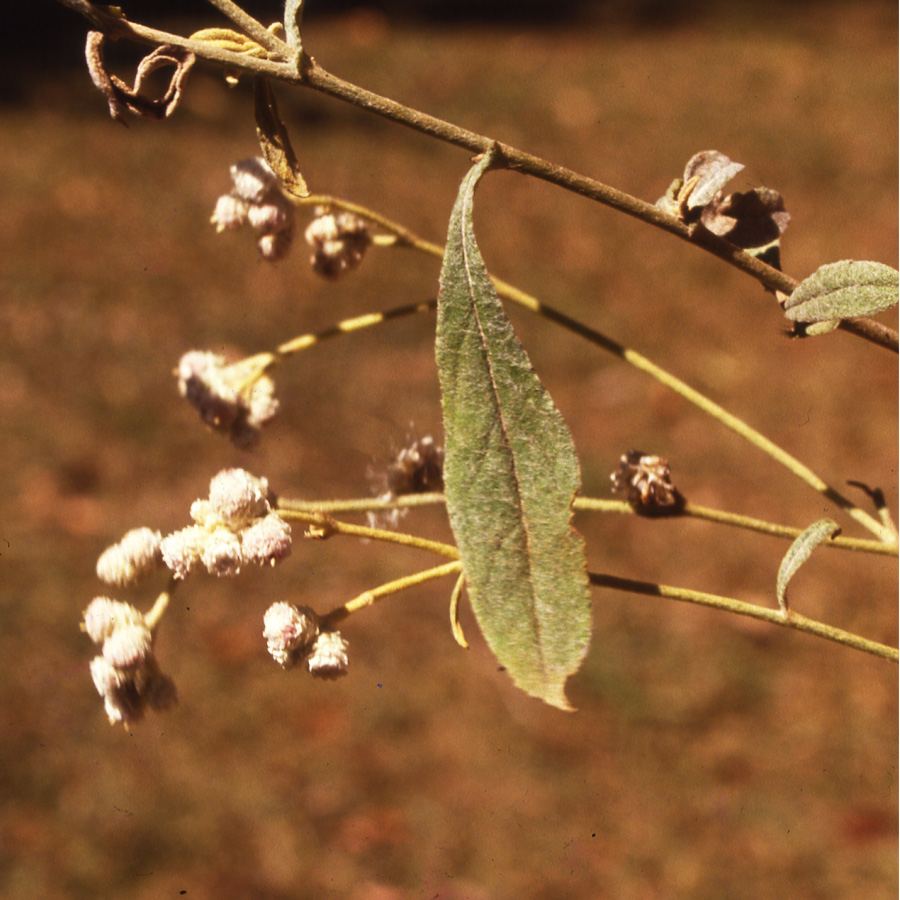Ozothamnus Eriocephalus
Ozothamnus eriocephalus
Conservation Status
Queensland State: Vulnerable
Australian Government: Vulnerable
Download
All the information on this page is available as a pdf download.
Species and status overview
A spindly shrub growing to about 1 m with fine white hairs over the branches Ozothamnus eriocephalus occurs in a range of different habitats from the edges of vine and gallery forest; to tall open Eucalypt forest with an understory of Allocasuarina; to open eucalypt forest with Acacia and scrub understory. It is found at moderate to high elevations 380-950 m.
O. eriocephalus has become vulnerable through a combination of threats including inappropriate land management regimes (e.g. fire and grazing) and degradation of natural habitat by weeds.
The species has been recorded locally in the following areas
- Peases Lookout and Dick’s Tableland in Eungella National Park
- Sydney Heads at Homevale National Park
- Finch Hatton Gorge
- Lake Elphinstone
- Mt. Abbot
- Gloucester Island
- Redcliffe vale
Description
O. eriocephalus features a web of fine hairs over the lance-shaped leaves giving the plant a pale hue. The leaves are dark green on the underside with prominent veins on the top. Flowers are purple to white, 3 mm long and also covered in the white hairs.
This species flowers in March and May and from July to September, with fruiting recorded in March and July.
Conservation concerns
Known threats include
- Invasion by exotic weeds such as Molasses grass and Guinea grass or Lantana camara and blue-top
- Overgrazing especially near cattle camps beside watering points and molasses troughs
- Inappropriate timber harvesting
- Inappropriate fire regimes
What can I do?
- Manage and prevent the establishment of weeds such as Lantana in areas of known populations
- Maintain fire regimes which are suitable for the habitat in which this species occurs. Refer to: The Clarke Connors Range Fire Management Guidelines
More Information
Photo credit Steve and Alison Pearson
